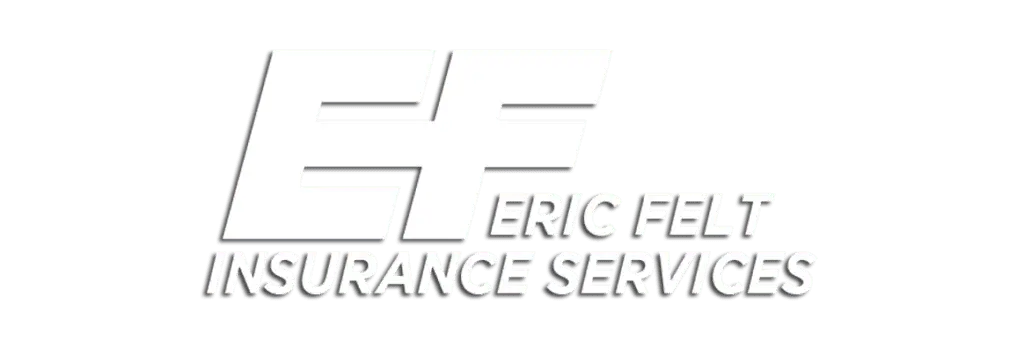Sorting your insurance can feel like juggling too many balls at once. Bundling policies with one provider offers a way out—bringing all those moving parts together. More people are switching to bundles because managing one account, instead of several, just makes life smoother.
With a bundle, you get one bill, fewer passwords, and customer support that already knows your needs. Most providers offer notable savings, sometimes up to 20% or more, for combining things like home and auto policies. This means less time chasing paperwork and more money left in your pocket. It’s a smart move if you want simple, efficient protection for what matters most.
What Is Insurance Policy Bundling?
Insurance policy bundling means buying two or more types of insurance from the same company. Instead of juggling separate bills and accounts, you roll everything into one account with a single provider. Bundling makes everything feel more organized—think of it as clearing clutter from your desk, but for your finances.
When you bundle, insurance companies often reward you with lower overall rates. Discounts can range from 5% to 23%, depending on what and how much you bundle. That means more coverage for less money and an easier way to keep track of all your policies. If a storm hits both your car and your home, some bundles even let you pay just one deductible, making stressful moments a little easier to handle.

Photo by Vlad Deep
Bundling isn’t just about price. You’ll have a simpler time with paperwork, automatic payments, renewals, and customer service. The big win? If you like convenience and hate headaches, bundling is an easy upgrade.
Common Insurance Policies You Can Bundle
Most people start with the classic home and auto bundle, but the options don’t stop there. Here’s a look at the most popular combinations and a few specialty choices:
- Home and Auto: The most common bundle. Protect your house and your car under one roof, saving money and streamlining claims.
- Renters and Auto: Ideal if you rent your place but still drive. Get a multi-policy discount even without owning a home.
- Condo and Auto: Similar to home and auto, but tailored for condo owners.
- Home, Auto, and Life: Some insurers allow you to stack life insurance with home and auto for an all-around safety net.
- Specialty Add-Ons: Expand your bundle with policies for RVs, boats, motorcycles, or even umbrella coverage for added liability protection.
Some companies offer even more flexibility, letting you add pet, landlord, or business insurance. It’s like building your own insurance toolkit—choose what you need, skip what you don’t, and handle it all in one place.
Bundling works best when the provider excels in all the types of insurance you need. Some companies specialize in auto but may fall short on home or specialty coverage. Always check which policy combos get you the best discount and the most reliable support.
Bundling doesn’t just make sense for simplicity—it’s a real way to cut monthly costs and keep everything easy to manage. Look for providers offering digital management tools and clear terms to get the most value from your bundle.
Major Advantages of Bundling Insurance Policies
Bundling insurance policies means more than just getting all your coverage from one company. It’s about making your daily life less hectic and your wallet a little heavier. When you bring policies together—like auto and home, or renters and motorcycle—you unlock benefits that go beyond a discount. From easier payments to streamlined paperwork and big savings, bundling helps you keep things simple.
Streamlined Account & Payment Management

Photo by Mikhail Nilov
One of the best perks of bundling is having everything under one roof. You’ll notice right away how much smoother things get:
- Single Bill: Instead of juggling multiple accounts, you’ll receive just one consolidated statement each month. No more forgetting which bill is for what policy.
- Easier Payment Tracking: With all your policies bundled, you can set up one automatic payment and view an at-a-glance summary on your insurance portal.
- Simplified Claims: If a storm damages both your home and car, some insurers let you file one claim—sometimes with a single deductible. Less back-and-forth, fewer forms, and quicker resolutions.
With everything in one place, you spend far less time sorting through accounts or contacting different agents. This centralized approach lets you handle renewals, updates, and questions with a single phone call or website visit.
Cost Savings and Multi-Policy Discounts
Bundling brings real savings—often more than most people expect. Major insurance names like State Farm, Allstate, Progressive, and Amica regularly advertise bundle discounts, and the numbers are more than just marketing:
- Discount Range: Most providers offer 10-25% off your total premium when you bundle, and some go as high as 30%.
- Real-World Examples:
- Allstate reports up to 25% in savings for combining auto and home.
- State Farm says customers can save up to $1,356 per year with bundled policies.
- Farmers and Travelers offer multi-policy discounts averaging between 15-20%, depending on the mix of policies.
Here’s why insurers want you to bundle: customers who do are more likely to stay, and the company spends less on administration. That means more savings for you—sometimes in the thousands every year, especially if you’re covering multiple vehicles or properties.
It’s not just about the headline discount. Bundled policyholders often gain access to more loyalty and reward programs, giving you extra ways to save.
Reducing Administrative Hassle and Paperwork
No one wants to drown in paperwork or chase down emails from three insurance companies at once. Bundling keeps your insurance life tidy:
- Centralized Documentation: All your policies, updates, and renewal notices arrive from the same provider. No mix-ups, less confusion.
- Single Point of Contact: You talk to one agent or customer service team for all your needs—quotes, claims, policy changes, and questions.
- Less Clutter: Policy documents, proof of insurance, and claims correspondence are easier to find in one account, either online or in your mailbox.
Time is precious, and bundling hands you some of it back. Whether you need to file a claim or just pull your car insurance card, bundling puts everything at your fingertips. You gain mental clarity and save the kind of time that’s best spent elsewhere.
How to Bundle Your Insurance Policies Effectively
Bundling your insurance is more than just stacking policies under one roof. It’s about making smart choices, maximizing discounts, and making insurance work for you—not the other way around. When you bundle well, you cut down on hassle, protect what matters, and often save money. Here’s how to do it right.
Steps to Get Started with Bundling

Photo by Mikhail Nilov
Starting with insurance bundles doesn’t have to feel like reading a 50-page policy brochure. Make the process easier by following these clear steps:
- Review Your Current Insurance Policies
- List all your active policies—auto, home, renters, life, or specialty.
- Check each policy’s features, premium, deductibles, and renewal dates.
- Make note of coverages you need and any unnecessary extras.
- Gather Bundled Quotes from Multiple Providers
- Contact your current insurer and at least two competitors for bundled quotes.
- Be specific about which policies you want to bundle. Some providers may only offer discounts for certain combinations, like auto and home.
- Ask for written quotes so you can compare details side by side.
- Assess Discounts and Compare Total Costs
- Don’t just look at the headline quote. Compare deductibles, limits, and extra perks that come with bundling.
- Be sure the bundled price actually saves you money compared to buying each policy separately.
- Watch out for important details: Are there loyalty bonuses or rate locks?
- Evaluate Coverage Overlap or Gaps
- Read through your bundled offer to check for overlapping coverage (like roadside assistance or liability).
- Make sure you’re not missing important protection just to get a discount.
- Ask what happens in the event of a claim that affects multiple policies—will you pay one deductible, or more?
- Finalize and Switch
- Once you find the best deal, confirm cancellation dates on old policies to avoid lapses.
- Double-check that all new policies are active and meet your state’s minimum insurance requirements.
- Set up automatic payments if possible to keep billing simple going forward.
Tips for Maximizing Value When Bundling
Bundling isn’t something you set and forget. To squeeze the most value from your insurance bundles, try these best practices:
- Schedule Regular Policy Reviews
- Check your policies once a year, or whenever your life changes—buying a home, getting married, or having kids might mean you need more or less coverage.
- Rates and discounts shift, so it’s smart to shop around regularly.
- Take Advantage of Seasonal or Life-Event Bundles
- Some insurers offer extra perks for new homeowners or after major life events.
- Moving, a new job, or a new car might unlock more bundle options or bigger discounts.
- Use Insurer Loyalty Rewards and Referral Programs
- Ask about loyalty programs—some companies add extra discounts the longer you stay.
- Referral programs can score you more savings if friends or family join your insurer.
- Monitor for Overlapping Coverage
- Review add-ons or extras, like rental car coverage, that commonly appear in both auto and home policies.
- Double coverage means wasted money—trim extras unless you need them.
- Stay Organized
- Use your insurer’s online dashboard or mobile app to track policies and payments.
- Digital access makes claim filing and document retrieval much faster.
Smart bundling means more than just signing a dotted line; it’s a way to bring sanity to your insurance life, all while keeping a little extra cash in your pocket.
Potential Drawbacks and Considerations
Bundling your insurance policies promises big savings and a lot less hassle, but it’s not a solution without potential tradeoffs. Before you put all your eggs in one basket, it’s smart to pay attention to possible pitfalls. Taking a closer look now helps avoid unwelcome surprises down the road.
Limitations and Risks of Bundling
While bundling looks simple on the surface, there are a few risks worth watching out for:
- Discounts Might Shrink Over Time: Many providers offer attractive discounts to get you to bundle—but if rates increase at renewal, the savings can get wiped out. Initial discounts can fade as base premiums go up.
- Complacency Risk: With all your policies in one place, it’s easy to set them on autopilot and forget to review them each year. This “set it and forget it” habit means you might miss out on better deals or leave costly gaps uncovered.
- Reduced Flexibility: Bundling ties all your insurance to one company. If one policy gets expensive or you want to switch just your car insurance, it’s harder to cherry-pick the best deal for each type. You may feel stuck with the provider—especially if you’re afraid to lose a multi-policy discount.
- Limited Choices: Some bundles skip over niche or specialized needs. If the insurer is strong in auto but weaker in property or boat coverage, you might accept a mediocre policy just to save money upfront.
- Potential for Overpaying: To qualify for a bundle, you sometimes have to buy policies you don’t really need. That means paying for coverage that adds little real value.
Watch for these signs:
- Rate hikes that offset your discount after year one
- Reduced desire to shop around for a better deal
- Frustration if you try to unbundle one policy for any reason

Photo by Mikhail Nilov
Tailoring Coverage to Your Needs
Bundling shouldn’t mean “one size fits all.” It’s tempting to grab every policy your insurer offers just to chase a bigger discount, but this strategy can backfire. Here’s how to keep your coverage working for you:
- Scrutinize Every Policy: Read through each piece of the bundle. Only keep coverages you truly need and understand what extras are added automatically.
- Ask Yourself What Matters: Maybe you need high-value property coverage, strong roadside assistance, or expanded liability—but not everyone needs rental car coverage or pet insurance (unless your pet regularly launches wild parties).
- Avoid Unnecessary Add-Ons: Some bundle discounts make it seem like you’re saving, but those savings vanish if you’re paying $100 extra for coverage you wouldn’t have bought otherwise.
- Do an Annual Review: Needs change. If your life looks different now than when you signed up for the bundle, it’s time to re-evaluate and trim out the fat.
Smart bundling is about getting real value, never just chasing a discount. Always double-check the details so your insurance fits your life—not the other way around.
Conclusion
Bundling insurance policies turns a handful of bills and renewal dates into one simple relationship. Most people see real savings—often 10% to 25% off—plus less hassle with paperwork and billing. Managing claims, updating details, and reaching support becomes quicker when everything sits with one provider.
Still, the right bundle needs a fit. Discounts can disappear with rising rates, and you might end up paying for add-ons you don’t need. Take a fresh look every year to make sure your coverage lineup matches your life and budget.
If you’re ready to clear up your insurance routine and keep a little more money each month, now is a good time to explore bundling options. Compare quotes, ask questions, and make it work for you. Everyone’s situation is unique—what matters most is that your insurance feels simple and makes sense for your needs.
Thanks for reading—share your experiences below and let others know what’s worked or not worked for you!



